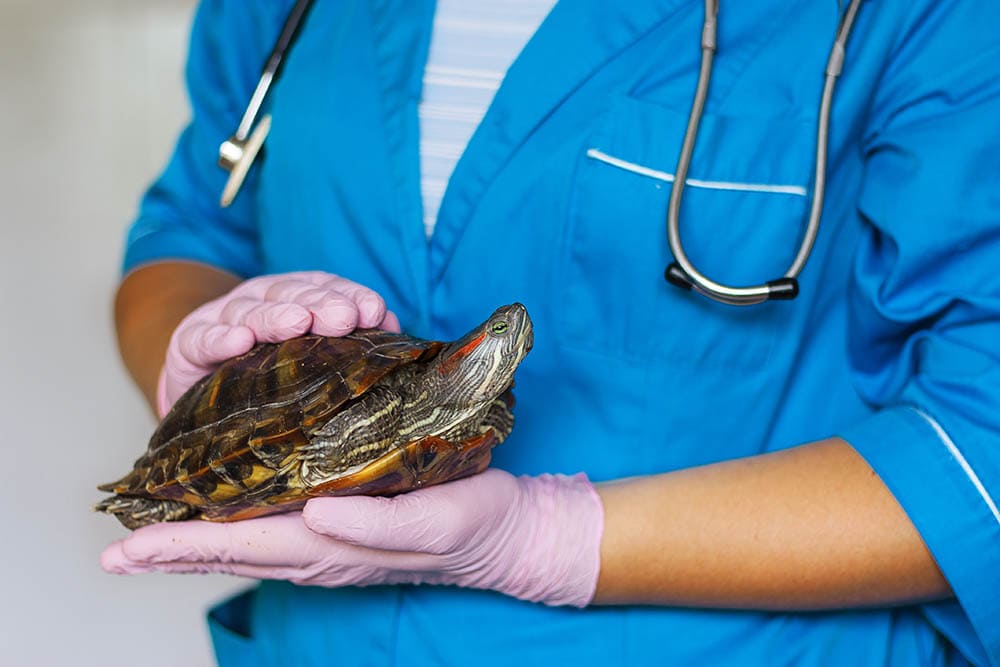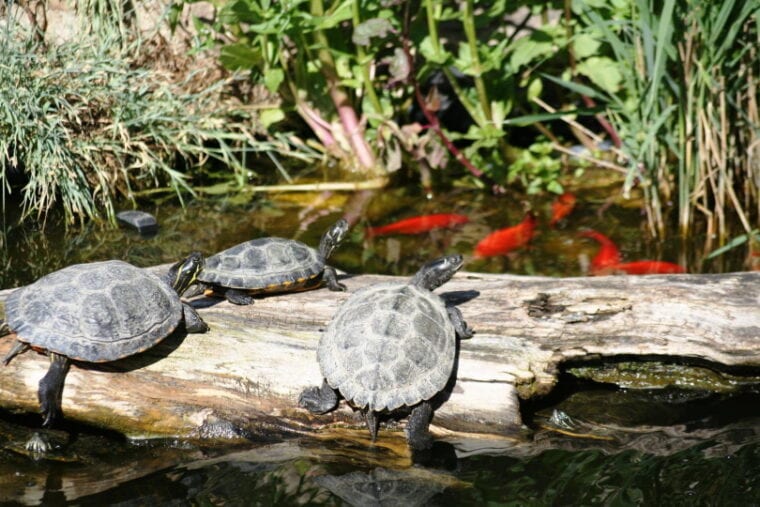
If you have fish but are considering adding a turtle to the aquarium or if you have a turtle and want to add fish to the habitat, you might be wondering if fish and turtles can coexist.
Most turtles eat fish, and for this reason, there are several fish and turtles that can’t live together. But there are a few exceptions.
Here, we get into what species of fish and turtles can live together and what you need to watch out for. We also look at what common wild turtles eat.
Different Species of Turtles
There are over 300 species of turtles that all have their own unique diets. Some turtles are carnivores, so they primarily eat meat, while others are herbivores, making them essentially vegetarians. However, most turtles are omnivores and eat both plants and animals.
A turtle’s diet depends on several factors: its habitat, what sources of food it has access to, and what kind of jaw it has for chewing.
Omnivorous turtles eat fish and tend to prefer fish over most other foods. However, some turtles might prefer to eat what you directly give them over chasing a fish around the tank. This scenario is more likely as long as you keep them properly fed. But certain fish species should never be put in a tank with a turtle.
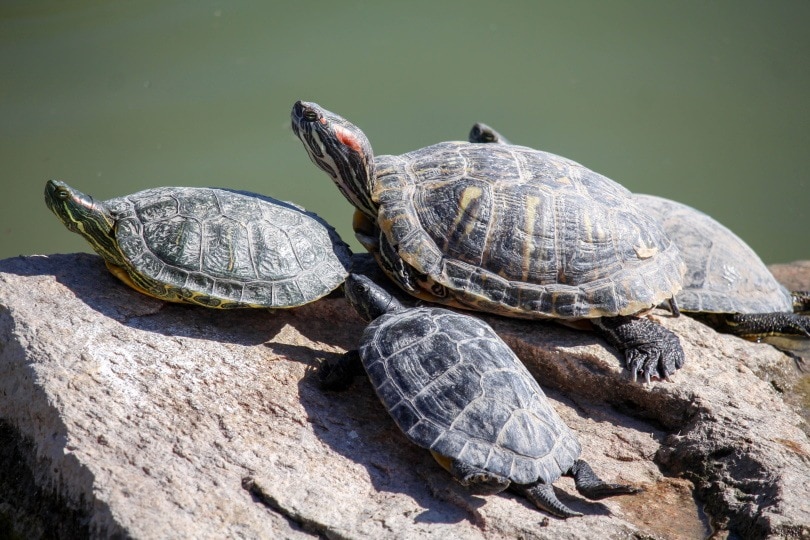
Fish Not Safe for Turtles
Here are fish that shouldn’t be eaten by turtles, which means they can’t live with them either:
When turtles eat small fish, they typically swallow them whole. These listed fish have small, sharp bones that can cause internal damage, which could be fatal. When a turtle eats a large fish, they take big bites out of it, which they again swallow whole, which can likewise lead to internal damage.
Some of these fish are also a natural source of thiaminase, which is an enzyme that can block the absorption of vitamin B1, an essential vitamin for turtles.
Wild-caught fish should also be avoided because pet turtles have a different immune system than wild turtles. Pet turtles are more likely to contract an illness or disease from wild fish.

Fish Safe for Turtles
This list of fish is safe for your turtle to eat. They don’t have as much thiaminase and not as many sharp bones:
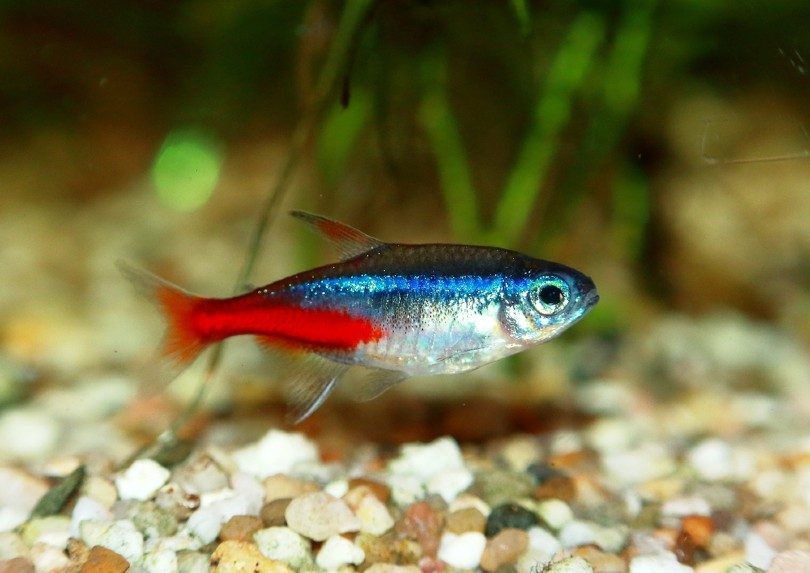
Herbivore Turtles
Owning an herbivore turtle would be the best-case scenario if you want your fish and turtle to coexist peacefully. The following are turtles that won’t show any interest in fish:
However, the issue with herbivore turtles is that they tend to grow quite large and generally don’t do as well in captivity as some other commonly kept turtles. But they could do well in a backyard pond or large aquarium.
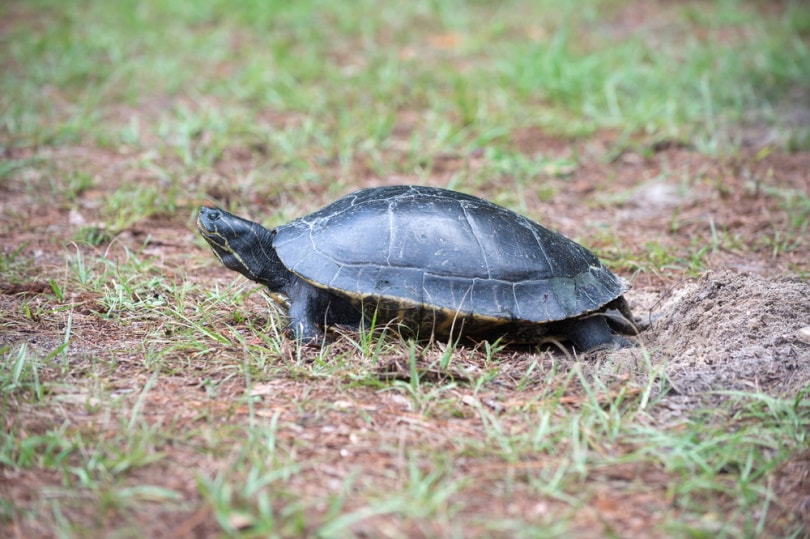
Fish That Can Live With a Turtle
There are various fish species that can live safely in the same tank as a turtle. The key thing is that the fish should either be very fast or very large.
The following fish can potentially live with a turtle:

 Top 4 Tips for Keeping Fish and Turtles Together
Top 4 Tips for Keeping Fish and Turtles Together
1. Large Enough Aquarium
The first and one of the most important ways to make your fish and turtles happy is to have a big enough aquarium.
Turtles up to 6 inches in size need about 30 gallons of water, and turtles between 6 and 8 inches need 55 gallons. Turtles larger than 8 inches need a minimum of 75 gallons. These guidelines can easily and comfortably fit a turtle and 10 or fewer fish.
As far as depth, the water should be double the size of your turtle, so if your turtle is about 8 inches, the water should be a minimum of 16 inches deep.
2. Feed Your Turtle Regularly
A hungry turtle will definitely go after the fish. Be sure to feed your turtle a high-quality pelleted food made for turtles. They should be fed once a day until they reach adulthood at 7 years of age. They can also be fed fruits and vegetables, as well as insects and feeder fish (like comet goldfish).
You can start feeding them every other day or four to five times a week at 7 years or older with about 1 cup of food, which can be adjusted depending on your turtle.
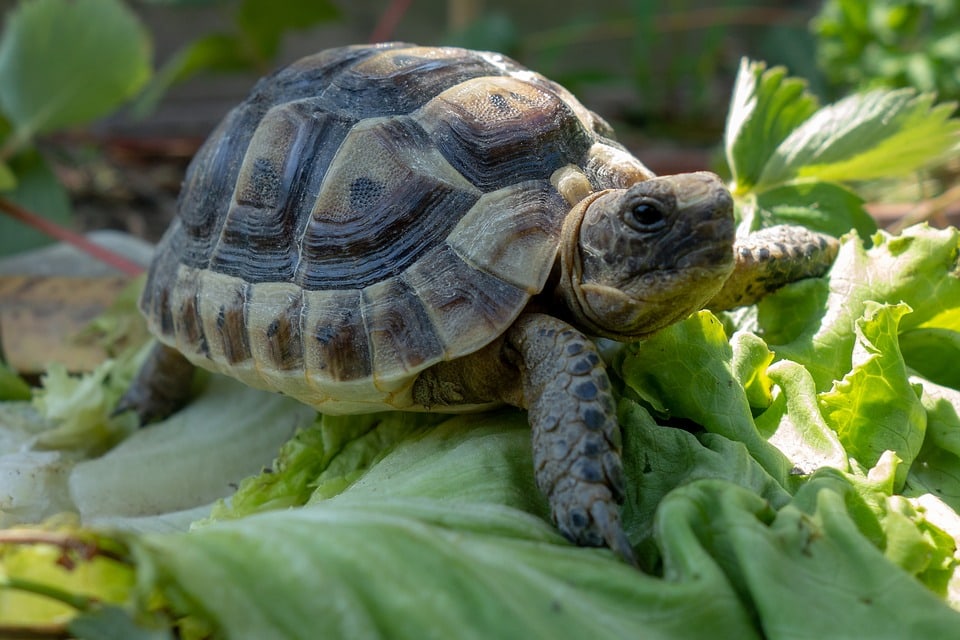
3. Hiding Places
Fish need hiding places where the turtles can’t reach them. This will make the living situation much easier and less stressful for the fish. Ensure that any decorations are large enough for your fish but small enough that your turtle can’t get inside. The fish should also have more than one escape route so they don’t get cornered.
4. Mature Turtles
Keep in mind that younger turtles eat more and are faster and more energetic. A mature turtle could mean that they won’t be as interested in the chase.
 What Do Wild Turtles Eat?
What Do Wild Turtles Eat?
There are many different species of turtles, and they all have diverse diets. Their choice of food also depends on opportunity based on their habitat.
Sea Turtles
It depends on the species of sea turtle, but a typical sea turtle diet can range from sea cucumbers, squid, and cuttlefish to sponges and crabs. Leatherback sea turtles primarily eat jellyfish, while green sea turtles are herbivores and feed on seagrass and algae.
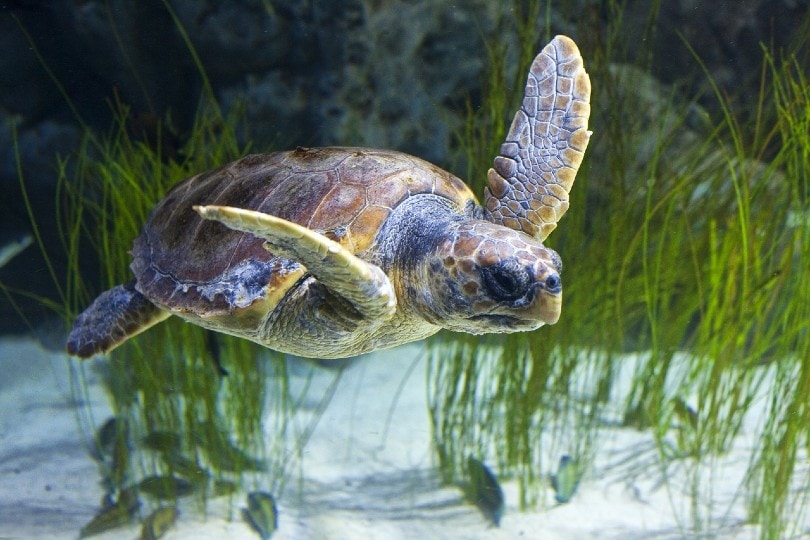
Terrestrial Turtles
Since these turtles mainly live on land, there aren’t many fish in their diet. They typically feed on things like snails, grubs, beetles, berries, flowers, mushrooms, and earthworms.
Freshwater Turtles
There’s a great deal of variety in freshwater turtle diets, including snails, worms, aquatic insects and larvae, water plants, crustaceans, and algae. Certain large freshwater turtles, like snapping turtles, also eat small mammals, such as snakes, frogs, smaller turtles, and fish.

Conclusion
If you’re looking to have your turtle live with and not eat your fish, remember to aim for fish that are large or fast and able to hide in small nooks inside the aquarium. Ensure that it’s a large enough aquarium that they can all swim comfortably.
It might take a bit of trial and error, so after you have added fish to your turtle’s tank, be sure to keep an eye on things for a while. You also don’t want your fish to be overly stressed out with a turtle constantly snapping at their fins!
Featured Image Credit: Bouda, Pixabay



